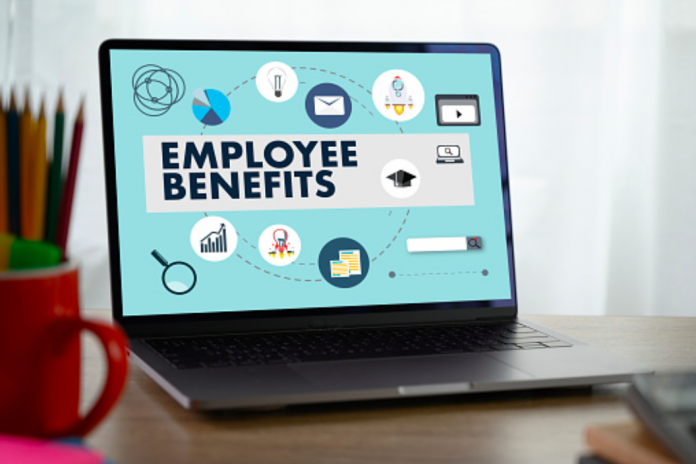Technology has created a shift in nearly every business. As technology changes and grows, its impact on the workforce becomes more significant. From sales and marketing to human resources, advances in technology have changed the way the world works.
Technology has had a significant impact on the field of human resources, including employee benefits. With the addition of employee benefits technology, businesses are reaping many benefits of their own.
Technology has changed the way benefits are offered and delivered, making them much more effective and giving employers the ability to tailor benefits packages. In doing so, benefits technology has increased efficiency and effectiveness of employee benefits, helping the business in the process.
Online Access
Many leading companies offer online portals that allow employees to register, access, and learn about their benefits at their own pace. Oftentimes, details of benefits are missed or not presented in full detail during the onboarding process. Access to detailed benefits information such as an HSA guide is beneficial for employees because they have access to information when it is needed.
Online access also has benefits for the employer. The ability to register for benefits online frees up time for the employee and Human Resources, making onboarding more efficient and increasing the likelihood that benefits will be used to their full advantage.
Likewise, benefits information being available online decreases the time human resources employees spend answering questions and assisting with paperwork.
Online portals often allow employees to file claims, add dependents and alter benefits online, and track their contributions at their leisure. A well-designed program will allow for asking questions and tracking important information.
Online portals often prove to be more cost-effective for employers. The employee portal can contain all pertinent information and store important documents, cutting down on paper, filing, and storage for the employer.
Employers may also use the portal to share announcements and information about changes in policies and benefits including open enrollment periods.
In general online portals make benefits more efficient and effective, by allowing employees to have more control over their benefits.
Employees are more likely to utilize benefits when they are able to access them and read about them independently. Employees who are happy with their benefits package are more likely to remain with their employers.
The use of a benefits technology program that increases employee engagement while also providing a clear explanation of all benefits offered, may increase employee retention.
Reducing The Costs of Care
The most costly employee benefit is typically healthcare. Benefit technology offers a variety of ways to reduce the cost of healthcare for employers as well as streamline the process.
Benefits technology reduces manual labor, streamlining the process, and making it more efficient. The use of an automated system also reduces healthcare reporting errors, saving significant amounts of time and money.
This type of program can also resolve billing issues, track contributions, and allow employees to compare plans. It is estimated that the average Benefits Executive spends approximately 80% of their time responding to healthcare-related inquiries. This will effectively reduce the amount of time that human resources and benefits executives spend responding to these inquiries allowing their time to be used more efficiently.
Another way to help reduce healthcare costs with benefits technology is virtual healthcare. Virtual healthcare gives employees more control over their health and the costs associated with it. The availability of medical professionals via telehealth can lead to less missed time from work for appointments and fewer costs overall for both the employer and the employee.

Communication
Many companies find that benefits technology can be a useful way to present benefit options and communicate with employees.
A common way to do this is through the use of gamification, adding game-like elements to the employee portals or employer websites.
The addition of quizzes and questionnaires are examples of gamification. Quizzes are often more enjoyable and therefore more efficient than videos or articles and can convey the same information.
These types of quizzes may be used to encourage the completion of health risk assessments or surveys.
Other elements including the use of points or levels can increase employee engagement and bring attention to under-used benefits.
Some employers have found it effective to use gamification to allow employees to “earn” additional benefits by tracking, sales, commission or other milestones.
Gamification can increase employee engagement with benefits technology and the efficiency of communication regarding changes to benefits.
Data-Driven Decisions
An often overlooked benefit of benefits technology is the data available. Many programs can track and maintain data including the popularity of individual benefits and specific healthcare plans.
Data from these websites and portals can be analyzed and used to predict the likelihood of new applicants choosing and utilizing benefits, potential costs to manage benefits, and what areas benefit packages may be lacking in.
Data-driven decision making is commonly used in businesses to make the most cost-effective and efficient decisions, benefits technology allows employers to do the same in regards to employee benefits.
Making Benefits Technology Work for You

To remain competitive in the current workforce, technology, in all its forms is a necessary part of every field.
The use of benefits technology has the potential to greatly benefit the employer. A well-designed benefits program will clearly layout available benefits increasing engagement and efficiency.
Benefits technology may also offer a great deal of cost-saving. This type of technology can reduce costs by reducing reporting errors and by bringing attention to under-used benefits.
A good benefits technology program is informative and engaging, this allows employees to access information and communicate more efficiently, leading to increased employee retention.
Benefit technology also reduces the amount of manual and paperwork that often becomes cumbersome and costly for both the company and the employees.
In addition, benefits technology can track and store data that can be analyzed and used to predict costs and patterns and to make decisions regarding future benefits and onboarding processes.
The use of a well-designed and functional benefits technology programs can be a beneficial investment to nearly every business.




























